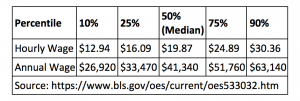“Unfortunately, motor fuel taxes are an increasingly unsustainable source of revenue as fuel efficient hybrid vehicles and completely electric vehicles grow in popularity” — Courtney Moran and Casey Ball.
Federal motor fuel taxes haven’t been increased since Clinton was in his first term as president. They simply aren’t a sustainable form of revenue to pay for transportation infrastructure.
In this context, a number of states are more realistically testing out what the vehicle mileage traveled (VMT). Brookings Institution has a nice report on the topic here. The researchers found that switching to a VMT “would raise $55 billion a year for highway spending [and] could increase social welfare by 20 percent when compared to an increase in the gas tax to meet the same goal when taking into account changes in Corporate Average Fuel Economy (CAFE) standards.”
Washington State legislature has been looking at VMT since 2012. They “think it’s a viable approach, but now it’s time to test it.” “The one-year study, which will involve 2,000 volunteers, would figure out ways to charge car owners a tax based on how many miles they’ve driven within the state, rather than how much gas was pumped.” They are not only testing out the idea of VMT, but the ways in which people would report the mileage driven. The approaches include:
“A mileage permit, where a driver chooses how many miles to purchase. Odometer readings: A per-mile charge would be based on the vehicle odometer. Automated mileage meter: A device installed in the car would report miles driven. Drivers would choose GPS or not. Smart Phone: A downloadable app would use the driver’s phone to record and/or report miles driven.” Drivers can sign up now to pilot the approach to taxes.
Oregon conducted a similar pilot in 2015, with few pilot subjects continuing to opt for the VMT rather than fuel taxes. California, Pennsylvania, and Delaware are also testing out this idea. It may take a few more years to become mainstream, but the inability of Washington, DC (Congress/President) to do anything on raising fuel taxes, coupled with more fuel-efficient cars using few gallons of gas per mile create a situation where leaders will HAVE to do something (hopefully) sooner rather than later.




